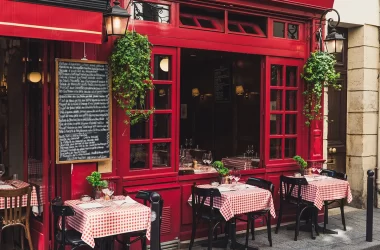Restaurants are public establishments where individuals can obtain food and drinks on a commercial basis. Restaurants range from fast-food joints and cafeterias that serve fast food to high-priced luxury establishments that serve gourmet fare.
Restaurants can be distinguished from one another based on their cuisine (for instance vegetarian, seafood and French) or style of service; also by customer base and business model.
Food and Beverage
Food and beverages sold or served at restaurants are often the main draw. From casual to fine dining establishments, restaurants can range from casual to fine dining experiences; each may be distinguished by their service style, selection of food or beverages offered for sale, theme decor or other unique elements.
Restaurants now provide special menus tailored to health-conscious diners and those following vegetarian or vegan diets, while others are experimenting with new types of foods, like fermented and smoked meats.
Workers involved with food and beverage serving or related positions require excellent communication skills in order to take orders accurately from customers and relay them back to kitchen staff. They must also possess physical stamina for standing, lifting trays and cleaning work areas. Managers at restaurants must be able to estimate food and beverage costs accurately before ordering supplies and equipment that fulfill them; additionally they need to train and supervise food preparation and service staff and understand any state or local laws regulating alcohol sales.
Commercial Activity
Restaurants are an integral component of economic activity in cities and towns, providing employment as well as serving as an entertainment venue. Furthermore, they play an essential role in downtown revitalization efforts.
Local Residents
In most communities, residents represent the primary market segment for restaurants. Dining habits of this market segment can typically be accurately evaluated using demographic and consumer expenditure data, focus group and survey research. Local consumers generally seek restaurants offering unique culinary niches such as New York style delis or coffee shops offering micro-brew products.
Restaurant operations encompass all activities undertaken daily to run successfully and satisfy its customers, from purchasing raw materials and hiring staff members, through serving meals and cleaning up afterward. A comprehensive restaurant management plan outlines all these functions – front of house to back – in detail for both staff members. It also projects all associated costs such as Cost of Goods for each employee as well as depreciation on fixed assets such as kitchen equipment and cleaning supplies as well as perishable purchases and costs associated with those assets.
Social Gathering
Restaurants provide the ideal setting for social gatherings. People enjoy gathering with friends and relatives over lunch, dinner or drinks – guests can order quality rose gin, bourbon and beer here. Mathers Social Gathering in Arts Factory serves up delectable bun cha, gatsby and chao. Furthermore, its staff are welcoming and attentive.
Beginning Monday, pubs and restaurants in England will be permitted to host groups of six or fewer from two households as long as contact details for all guests in their group are collected and kept on file for 21 days.








